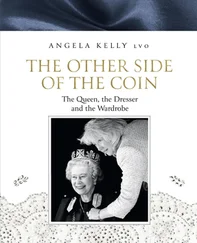The Queen - Matt Ridley
Здесь есть возможность читать онлайн «The Queen - Matt Ridley» весь текст электронной книги совершенно бесплатно (целиком полную версию без сокращений). В некоторых случаях можно слушать аудио, скачать через торрент в формате fb2 и присутствует краткое содержание. Жанр: Старинная литература, на английском языке. Описание произведения, (предисловие) а так же отзывы посетителей доступны на портале библиотеки ЛибКат.
- Название:Matt Ridley
- Автор:
- Жанр:
- Год:неизвестен
- ISBN:нет данных
- Рейтинг книги:4 / 5. Голосов: 1
-
Избранное:Добавить в избранное
- Отзывы:
-
Ваша оценка:
- 80
- 1
- 2
- 3
- 4
- 5
Matt Ridley: краткое содержание, описание и аннотация
Предлагаем к чтению аннотацию, описание, краткое содержание или предисловие (зависит от того, что написал сам автор книги «Matt Ridley»). Если вы не нашли необходимую информацию о книге — напишите в комментариях, мы постараемся отыскать её.
Matt Ridley — читать онлайн бесплатно полную книгу (весь текст) целиком
Ниже представлен текст книги, разбитый по страницам. Система сохранения места последней прочитанной страницы, позволяет с удобством читать онлайн бесплатно книгу «Matt Ridley», без необходимости каждый раз заново искать на чём Вы остановились. Поставьте закладку, и сможете в любой момент перейти на страницу, на которой закончили чтение.
Интервал:
Закладка:
GENETIC MUTINY AND GENDER
::: 117:::
Opossums are not alone. Hamsters reared in the laboratory can be made to have female-biased litters by keeping them hungry during adolescence or pregnancy. Among coypus (large aquatic rodents), females in good condition give birth to male-biased litters; those in poor condition give birth to female-biased litters. In white-tailed deer, older mothers or yearlings in poor condition have female fawns more often than by chance alone: So do rats kept in conditions of stress. But in many ungulates (hoofed animals), stress or poor habitat has the opposite effect, inducing a male-biased sex ratio.52
Some of these effects can be easily explained by rival theories. Because males are often bigger than females, male embryos generally grow faster and are more of a strain on the mother.
Therefore, it pays a hungry hamster or a weak deer to miscarry a male-biased litter and retain a female-biased one: Moreover, proving biased sex ratios at birth is not easy, and there have been so many negative results that some scientists maintain the positive ones are merely statistical flukes. (If you toss: a coin long enough, sooner or later you will get twenty heads in a row.) But neither explanation can address the opossum study and others like it. By the late 1980s many biologists were convinced that Trivers and Willard were right at least some of the time:"
The most intriguing results, however, were those that concerned social status. Tim Clutton-Brock of Cambridge University studied red deer on the island of Rhum off the Scottish coast. He found that the mother 's condition had little effect on the gender of her calves, but her rank within the social group did have an effect: Dominant females were slightly more likely to have sons than daughters:"
Clutton-Brock's results alerted primatologists,who had long suspected biased sex ratios in various species of monkey. In the Peruvian spider monkeys studied by Meg Symington, there was a clear association between rank and gender of offspring: Of twenty-one offspring born to lowest-ranked females, twenty-one were female; of eight born to highest-ranked females, six were male; those in the middle ranks had an equal sex ratio."
::: 118 :::
The Red Queen
But an even greater surprise was in store when other monkeys revealed their gender preferences. Among baboons, howler monkeys, rhesus macaques, and bonnet macaques, the opposite preference prevailed: high-ranking females gave birth to female offspring, and low-ranking females give birth to male offspring. In the eighty births to twenty female Kenyan baboons studied by Jeanne Altmann of the University of Chicago, the effect was so pronounced that high-ranking females were twice as likely to have daughters as low-ranking ones. Subsequent studies have come to less clear conclusions, and a few scientists believe that the monkey results are explained by chance. But one intriguing hint suggests otherwise."
Symington 's spider monkeys preferred sons when dominant, whereas the other monkeys preferred daughters. This may be no accident: In most monkeys (including howlers, baboons, and macaques) males leave the troop of their birth and join another at puberty—so-called male-exogamy: In spider monkeys the reverse applies: Females leave home. If a monkey leaves the troop it is born into, it has no chance to inherit its mother 's rank: Therefore, high-ranking females will have young of whatever gender stays at home in order to pass on the high rank to them. Low-ranking females will have young of whatever gender leaves the troop in order not to saddle the young with low rank. Thus high-ranking howlers, baboons, and macaques have daughters; high-ranking spider monkeys have sons."
This is a highly modified Trivers-Willard effect, known in the trade as a local-resource competition model. 58 High rank leads to a sex bias in favor of the gender that does not leave at puberty.
Could it possibly apply to human beings?
DOMINANT WOMEN HAVE SONS?
Mankind is an ape. Of the five species of ape, three are social, and in two of those, chimpanzees and gorillas, it is the females that leave the home troop. In the chimpanzees of Gombe Stream in Tan-GENETIC MUTINY AND GENDER
::: 119 :::
zania studied by Jane Goodall, young males born to senior females tend to rise to the top faster than males born to junior females.
Therefore, female apes of high social status "should "—according to the Trivers-Willard logic—have male young and those of low social status "should " have female young." Now men are not excessively polygamous, so the rewards of large size to men is not great: big men do not necessarily win more wives, and big boys do not necessarily become big men. But humans are a highly social species whose society is nearly always stratified in some way. One of the prime, indeed, ubiquitous perquisites of high social status in human males, as in male chimpanzees, is high reproductive success.
Wherever you look, from tribal aborigines to Victorian English-men, high-status males have had—and mostly still do have—more children than low-status ones. And the social status of males is very much inherited, or rather passed on from parent to child, whereas females generally leave home when they marry. I am not implying that the tendency for the female to travel to the male 's home when she marries is instinctive, natural, inevitable, or even desirable, but I am noting that it has been general. Cultures in which the opposite happens are rare. So human society, like ape society but unlike most monkey society, is a female-exogamous patriarchy, and sons inherit their father 's (or mother 's) status more than daughters inherit their parents ' status. Therefore, says Trivers-Willard, it would pay dominant fathers and high-ranking mothers, or both, to have sons and subordinates to have daughters: Do they?
The short answer is that nobody knows. American presidents, European aristocrats, various royals, and a few other elites have been suspected of having male-biased progeny at birth. In racist societies, subject races seem to be slightly more likely to have daughters than sons. But the subject is too fraught with potential complicating factors for any such statistics to be reliable. For example, merely by ceasing to breed once they have a boy—which those interested in dynastic succession might do—people would have male-biased sex ratios at birth. However, there certainly are no studies showing reliably unbiased sex ratios. And there is one tantalizing study from New Zealand that hints at what might be found
::: 120 :::
The Red Queen
if anthropologists and sociologists cared to look into the matter. b°
As early as 1966, Valerie Grant, a psychiatrist at the University of Auckland in New Zealand, noticed an apparent tendency for women who subsequently gave birth to boys to be more emotionally independent and dominating than those who gave birth to girls: She tested the personalities of eighty-five women in the first trimester of pregnancy using a standard test designed to distinguish "dominant " from "subordinate " personalities—whatever that may mean.
Those who later gave birth to daughters averaged 1:3 5 on the dominance scale (from 0 to 6): Those who later gave birth to sons averaged 2.26, a highly significant difference. The interesting thing about Grant' s work is that she began before the Trivers-Willard theory was published, in the 1960s. "I arrived at the idea quite independently of any study in any of the areas in which such a notion might reasonably arise, " she told me, "For me the idea arose out of an unwillingness to burden women with the responsibility for the 'wrong ' sex child." b " Her work remains the only hint that maternal social rank affects the gender of children in the way that the Trivers-Willard-Symington theory would predict. If it proves to be more than a chance result, it immediately leads to the question of how people are unconsciously achieving something that they , have been consciously striving to achieve for generations unnumbered:
Читать дальшеИнтервал:
Закладка:
Похожие книги на «Matt Ridley»
Представляем Вашему вниманию похожие книги на «Matt Ridley» списком для выбора. Мы отобрали схожую по названию и смыслу литературу в надежде предоставить читателям больше вариантов отыскать новые, интересные, ещё непрочитанные произведения.
Обсуждение, отзывы о книге «Matt Ridley» и просто собственные мнения читателей. Оставьте ваши комментарии, напишите, что Вы думаете о произведении, его смысле или главных героях. Укажите что конкретно понравилось, а что нет, и почему Вы так считаете.












